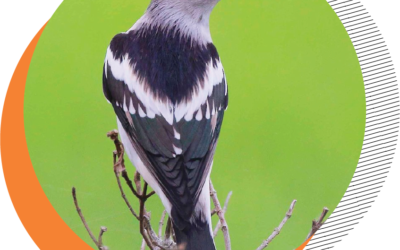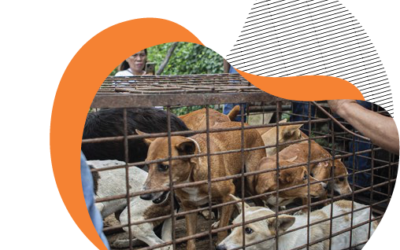
PLASTIC WASTE: REVEALING THE IMPACT OF PLASTIC WASTE ON WILDLIFE
By: Putu Eka Gunadi
Translator : AWI Team
The goal of plastic use in human life is to increase comfort and practicality. Plastic is used by people in a variety of ways, such as morning coffee glasses and grocery shopping plastic bags. However, it turns out that plastic garbage takes a very long time to disintegrate for something that is used so rapidly and conveniently.


Image 1. Garbage in mountains and water areas (Source: www. waste4change.com)
Examples of plastic materials that decompose naturally include plastic bags, which take between 10 and 500 years to decompose, plastic straws, which take 20 to 50 years, plastic cups, which take 50 to 80 years, and plastic bottles, which take about 450 years. However, polystyrene does not break down naturally.
The world’s biggest problems with plastic trash are overconsumption by people and inefficient waste disposal. If improperly handled plastic garbage is dispersed across land or in water, the dangers can be equally great. This therefore begs the question: Should something that we use for a few minutes as humans be permitted to contaminate rivers and oceans, affecting wildlife and forests for the rest of their lives?

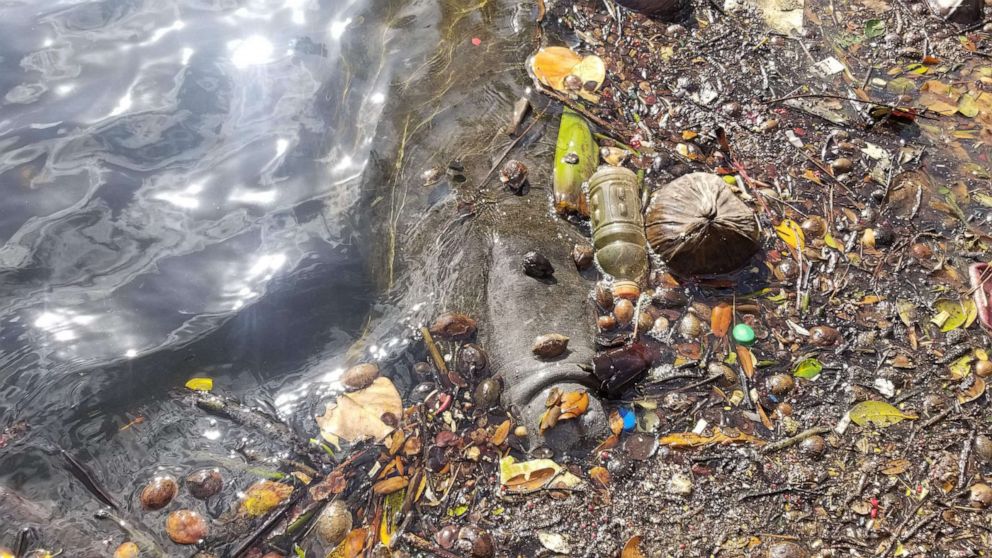
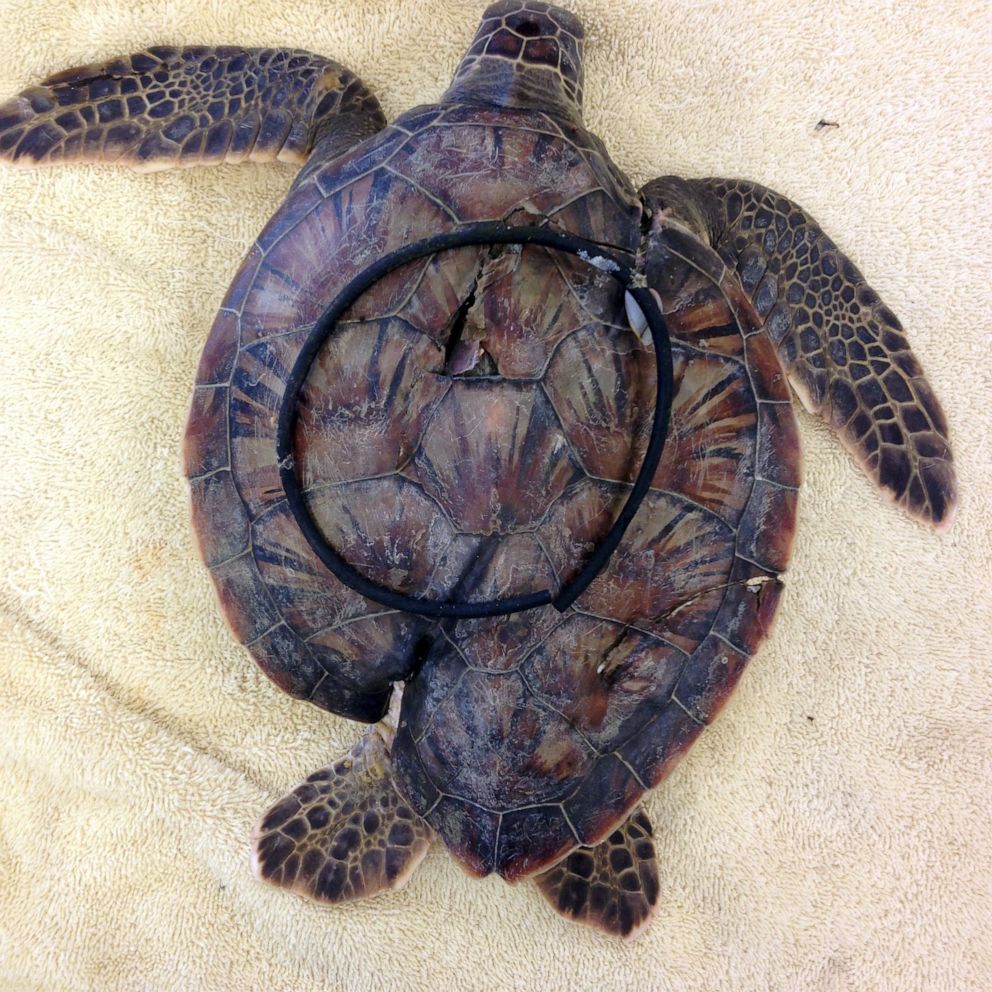
Image 2. Marine animals entangled in plastic waste. (Source: www.abcnews.go.com)
Plastic trash poses a serious threat to animals. capture a lot of wildlife, killing, drowning, and even chopping off limbs. Numerous terrestrial and aquatic animal species suffer as a result of plastic debris constantly disrupting their natural habitats. Animals cannot modify their behaviour to fit this new substance due to the rapid and large influx of plastic garbage. The effects of “Plastic Snare” on wildlife are as follows
1. Plastic waste is consumed by wildlife.
Plastic is frequently consumed by wildlife since they sometimes can’t tell it apart from food. Some fish eat plastic because they bite the floating plastic in the water, thinking it’s fish eggs. Plastic bags are perceived by turtles as jellyfish, which they often eat. A lot of land-grazing animals consume plastic. The likelihood that wildlife will consume plastic garbage increases when it is dispersed across the forest together with food waste.
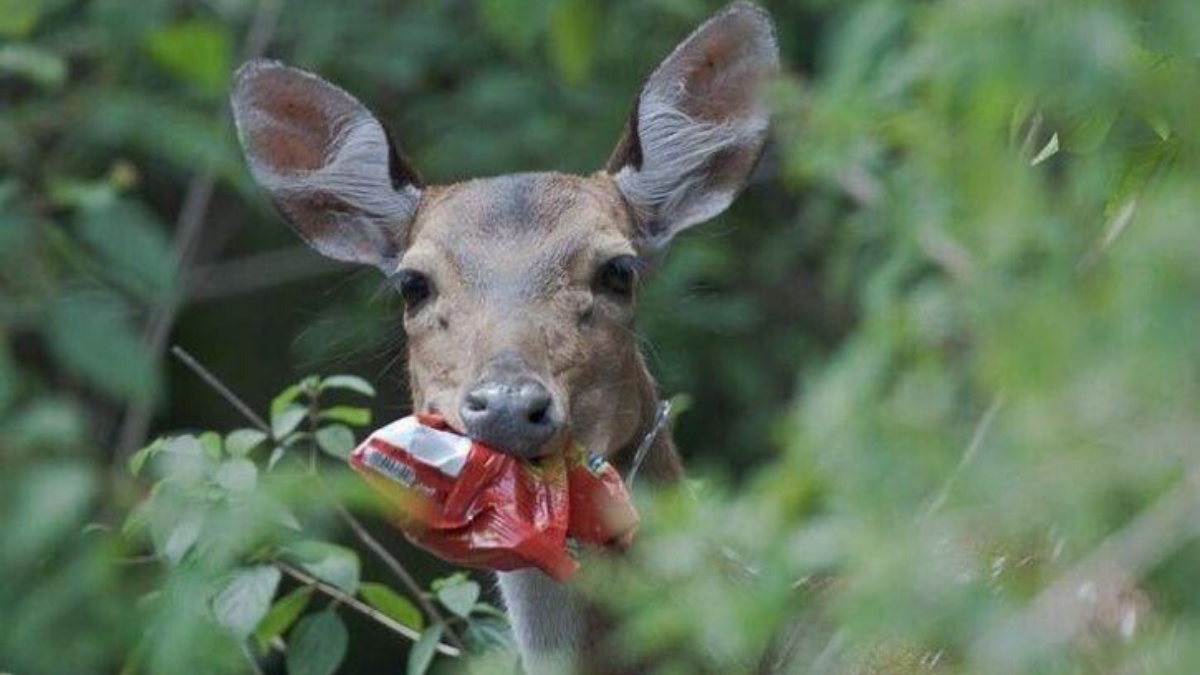

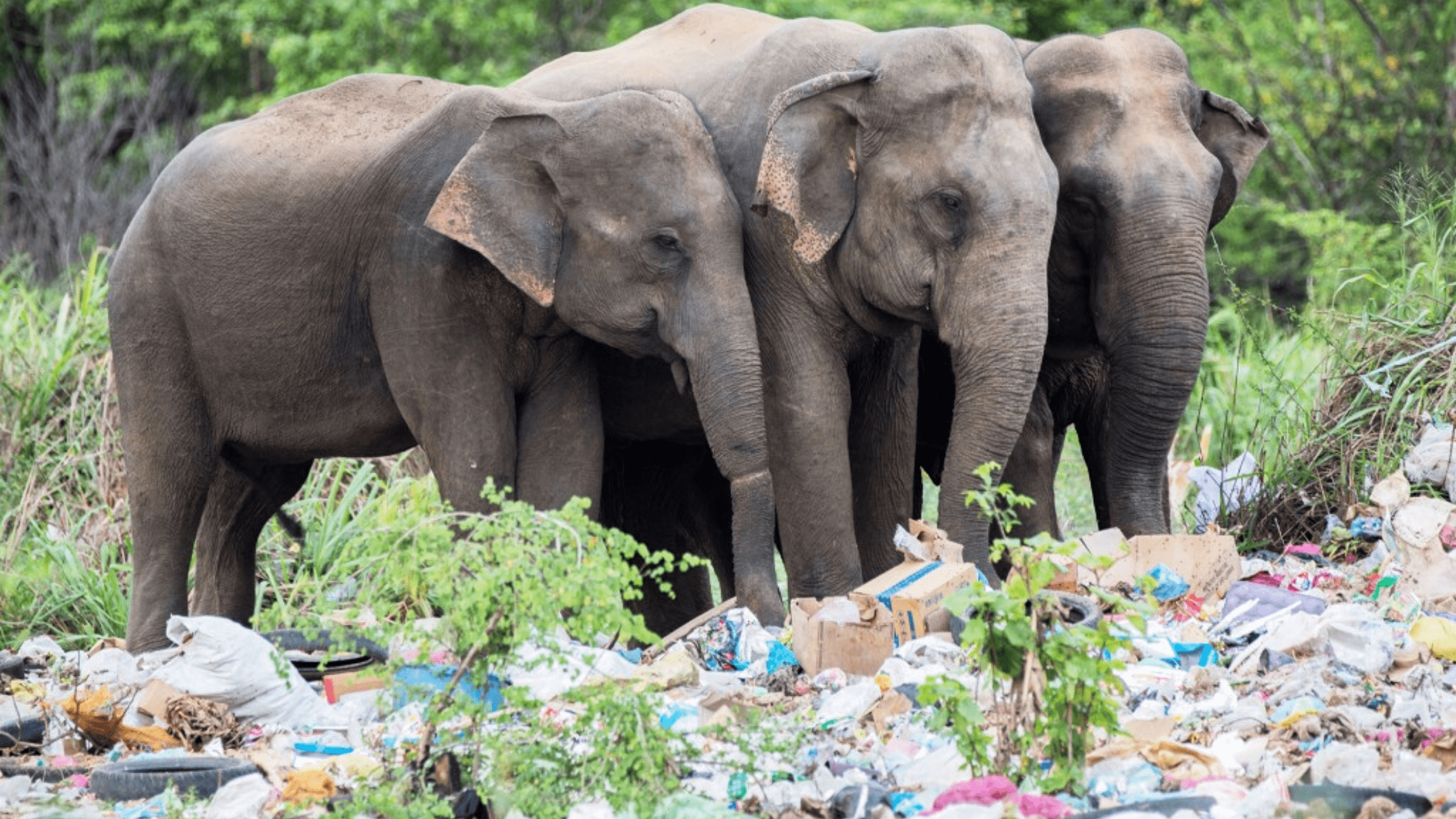
Image 3. Wild animals eat scattered plastic waste. (Source: www.repurpose.global dan www. plasticsoupfoundation.org)
A dead whale was discovered to have tonnes of plastic rubbish inside of it, which was sad news. In December 2018, a sperm whale found itself stranded in Indonesia’s Wakatobi National Park. Its stomach
included 115 cups, 25 bags, 4 bottles, and 2 sandals. The amount of plastic found in the whale’s stomach was over a thousand pieces, weighing a total of six kilogrammes. Half of the camel deaths in the United Arab Emirates are related to plastic. The animals consumed trash, and their bellies contained lumps of plastic weighing anything from ten to sixty kilogrammes. The lump grows until the animal dies of malnutrition because the plastic cannot exit the stomach.


Image 4. Stranded sperm whale in Wakatobi National Park (2018) and plastic waste in its stomach.(Source: www.mongabay.co.id)
2. Trapped with synthetic snares
Animals ensnared in plastic waste have a harder time finding food and are more vulnerable to predators. Animals that become entangled in plastic may suffer severe injuries, limited movement, malnutrition, drowning, or suffocating.
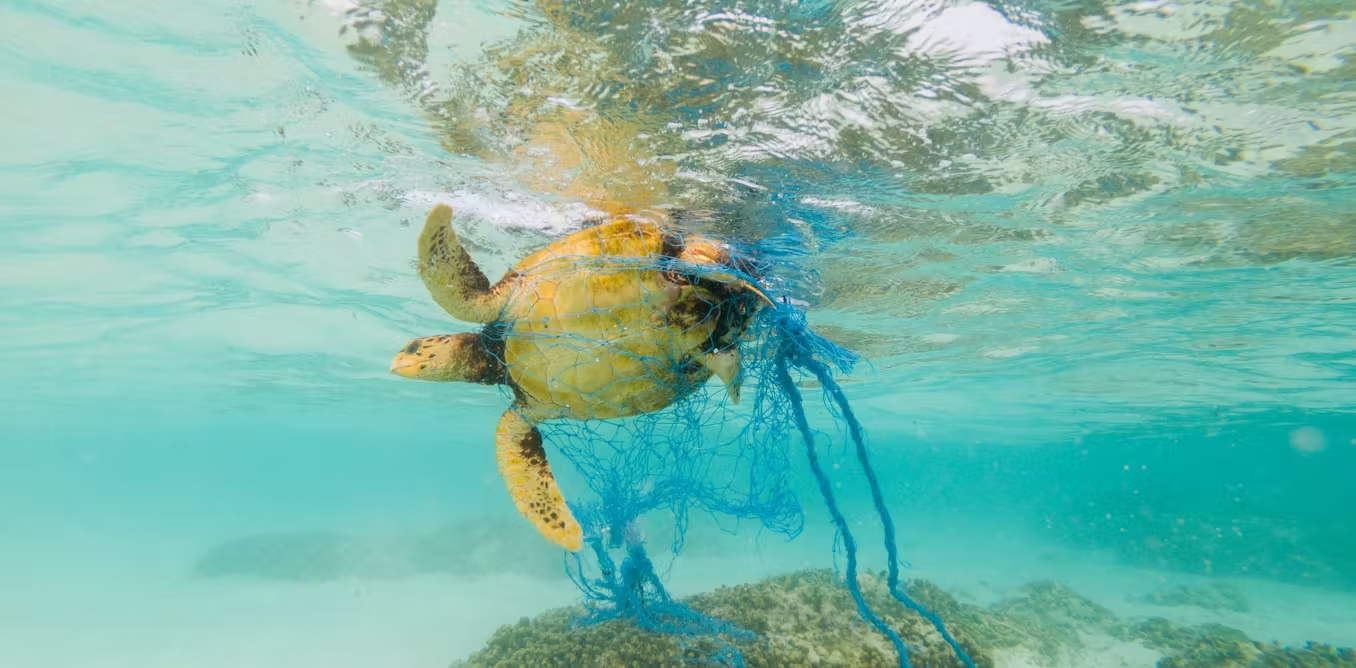
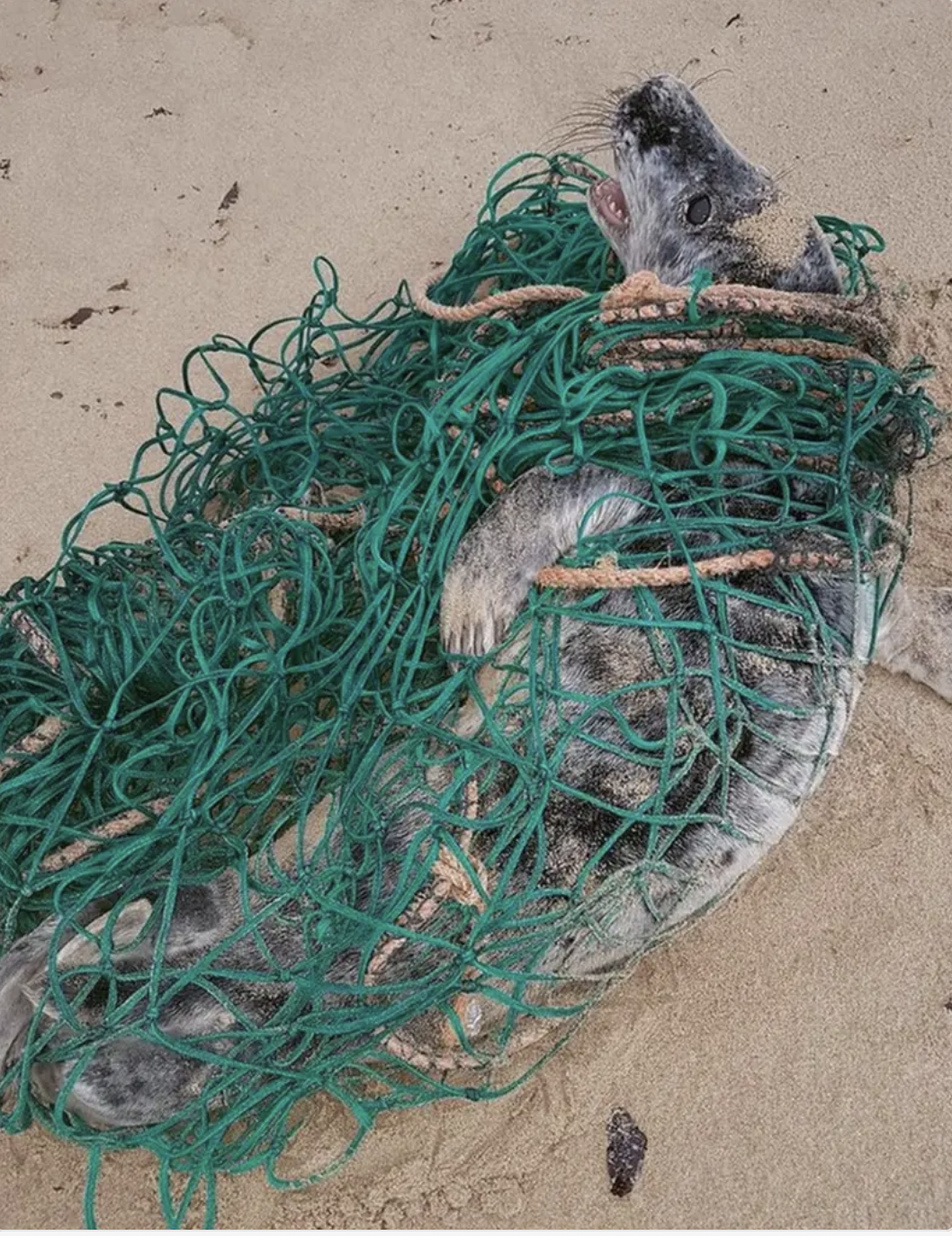
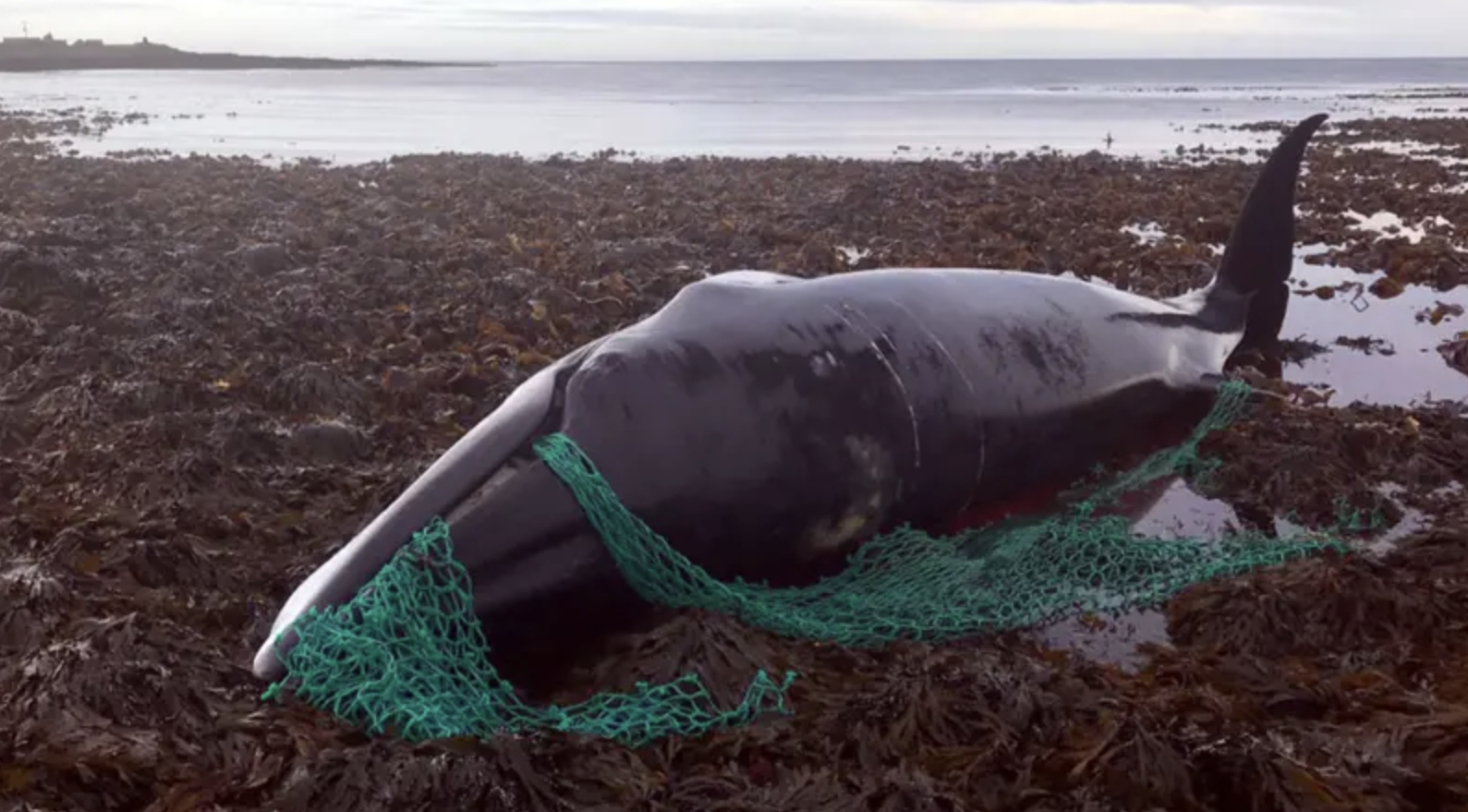
mage. 5 Turtles, seals and whales are entangled in plastic waste from fishermen’s nets. (Source: www.bbc.com and www.plasticsoupfoundation.org)
Plastic waste entrapment poses a greater risk to whales than whaling. The whale may lose its tail or fins as
a result of the sharp net threads severing its flesh. Sea lions, dolphins, and seals are examples of marine
creatures that frequently succumb to their own curiosity. They play with plastic objects by swimming up to
them. These things are unpleasant but harmful, something these creatures are not yet aware of.
3. Dangers of Microplastics in the Food Chain
Plastic waste can turn into small plastic particles less than five millimeters long, known as microplastics. Animals carry microplastics in their bodies. When they are eaten, the microplastics are also ingested. As one animal eats another animal, microplastics can move through the food chain. With plastic moving through the food chain, attached toxins can also move and accumulate in animal fat and tissue and can be dangerous for the animal itself or can become a threat when humans consume animals that contain microplastics such as fish, shrimp and squid.
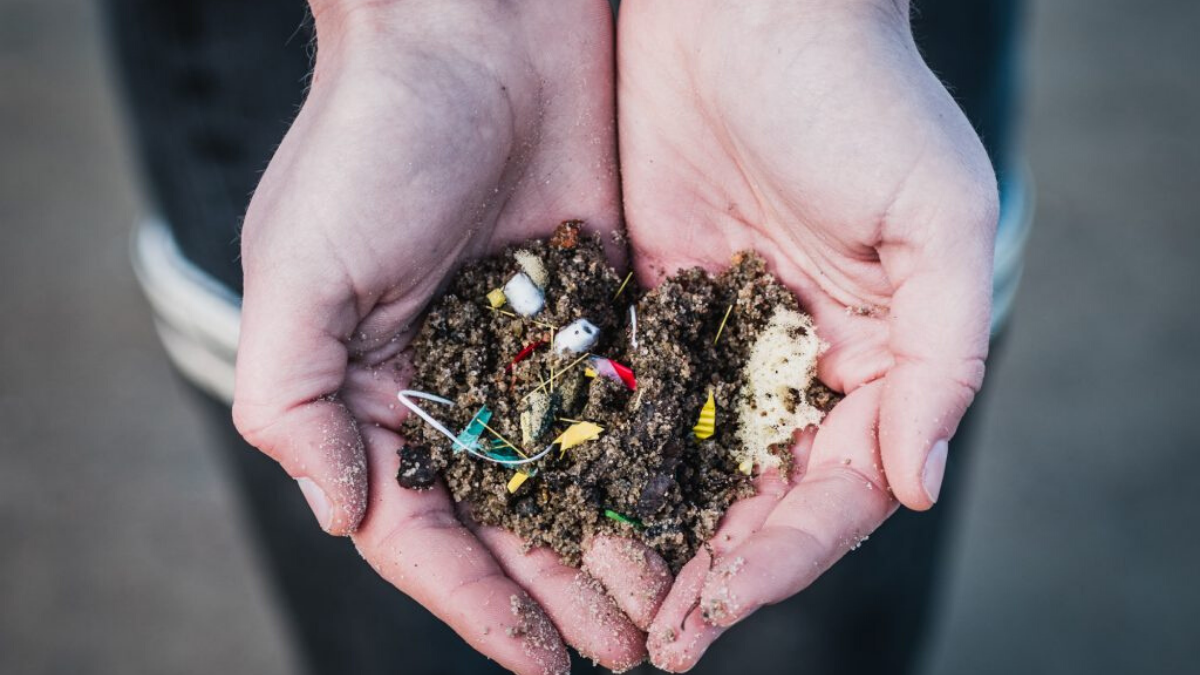

mage. 5 Turtles, seals and whales are entangled in plastic waste from fishermen’s nets. (Source: www.bbc.com and www.plasticsoupfoundation.org)
What other impacts does plastic have on
– Plastic waste floating in the ocean spreads invasive alien species throughout the world.
– Coral reefs filled with plastic are 20 times more likely to be affected by disease.
– Fish larvae are four times more likely to eat microplastics than real food.
Plastic waste is a global problem, let’s work together to find global solutions. Humans must also act locally with individual awareness by not using single-use packaging, choosing to recycle, looking for alternatives to reusable packaging, and picking up trash whenever we see it
Source:
https://waste4change.com/blog/mengapa-sampah-organik-dan-anorganik-dibedakan-berdasarkan-waktu-terurai/
https://waste4change.com/blog/mengenal-marpol-73-78-aturan-pengelolaan-sampah-di-lautan/
https://waste4change.com/blog/timbunan-sampah-di-gunung-everest/
https://abcnews.go.com/US/marine-animals-swallowing-entangled-plastic-alarming-rates-report/story?id=74296742
https://www.mongabay.co.id/2018/11/20/ditemukan-59-kg-sampah-dalam-perut-paus-sperma-di-wakatobi-kok-bisa/
https://www.bbc.com/indonesia/majalah-51090027
Madhvee Dhairykar, Shobha Jawre and Nidhi Rajput. The Pharma Innovation Journal 2022. Impact of plastic pollution on wildlife and its natural habitat.
Related Post
THE INTRODUCTION TO MIGRATORY BIRD COMING TO INDONESIA
THE INTRODUCTION TO MIGRATORY BIRD COMING TO INDONESIA. In the northern parts of the planet, winter arrives, and food supplies are running low. Millions of birds migrate
to the southern regions of the planet during that period. We refer to these travels as migratory bird migration. Food shrinking is a result of dropping temperature. Birds migrate for many reasons than only avoiding not only to locate another food source to survive in
the cold. They are therefore able to survive and procreate.
TREATMENT OF PRIMATES FOR COMMERCIAL PURPOSES SEEN FROM ANIMAL WELFARE POINT OF VIEW
TREATMENT OF PRIMATESFOR COMMERCIALPURPOSES SEEN FROMANIMAL WELFAREPOINT OF VIEW By: Atian Muhammad Zaky Fahrian Translator : Ludmila The first thing I’d like to address is that there are many content creators who keep wild animals and show them on their social media...
EXTREME TOMOHON TRADITIONAL MARKET: A CULTURAL CELEBRATION OR A THREAT TO WILDLIFE?
Extreme Tomohon Traditional Market: a Cultural Celebration or a Threat to Wildlife? Starting from July 21 2023, the local government of Tomohon, a city in North Sulawesi, has officially banned the trading of cats and dogs at the ‘Extreme’ market. This decision aligns...
